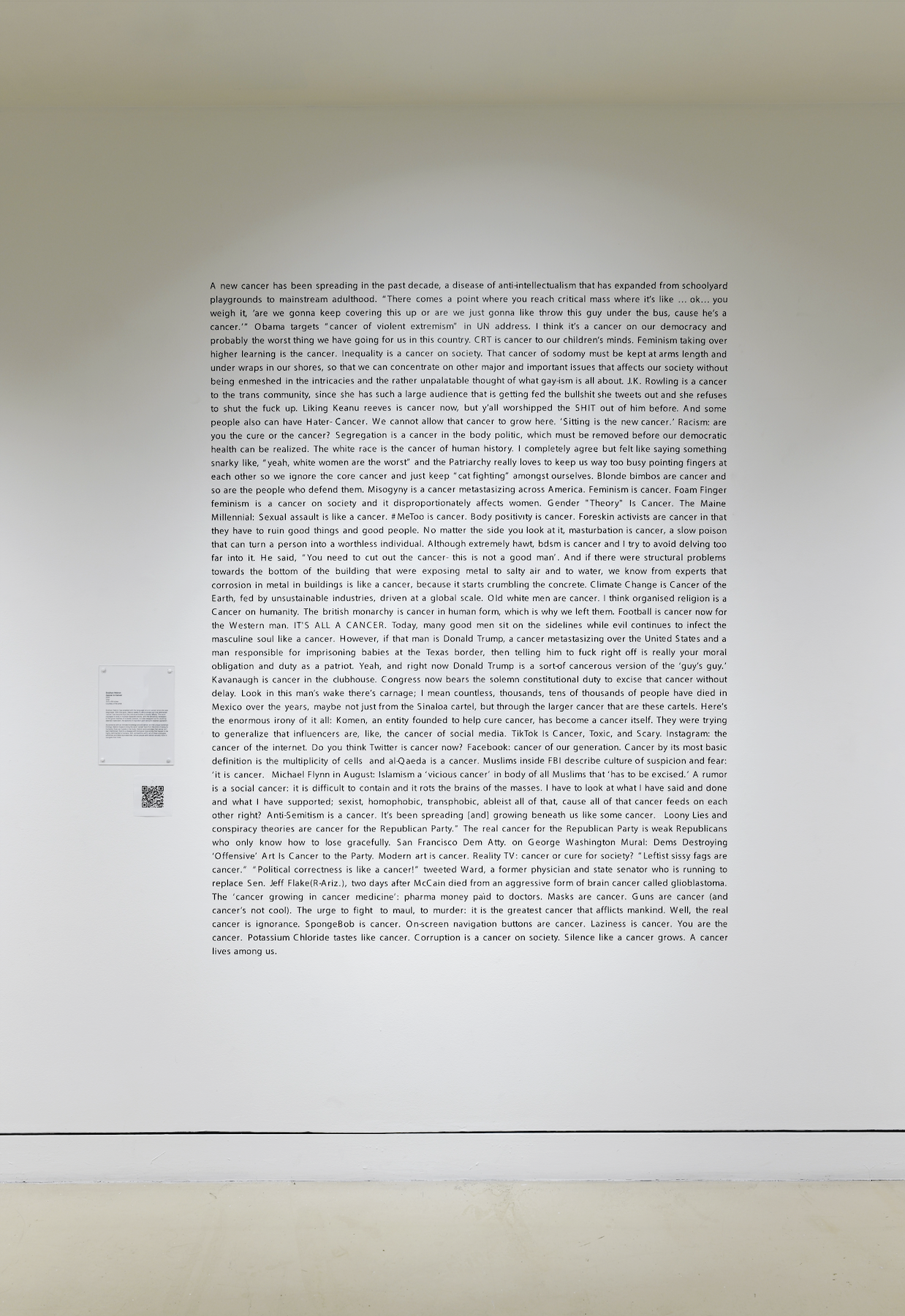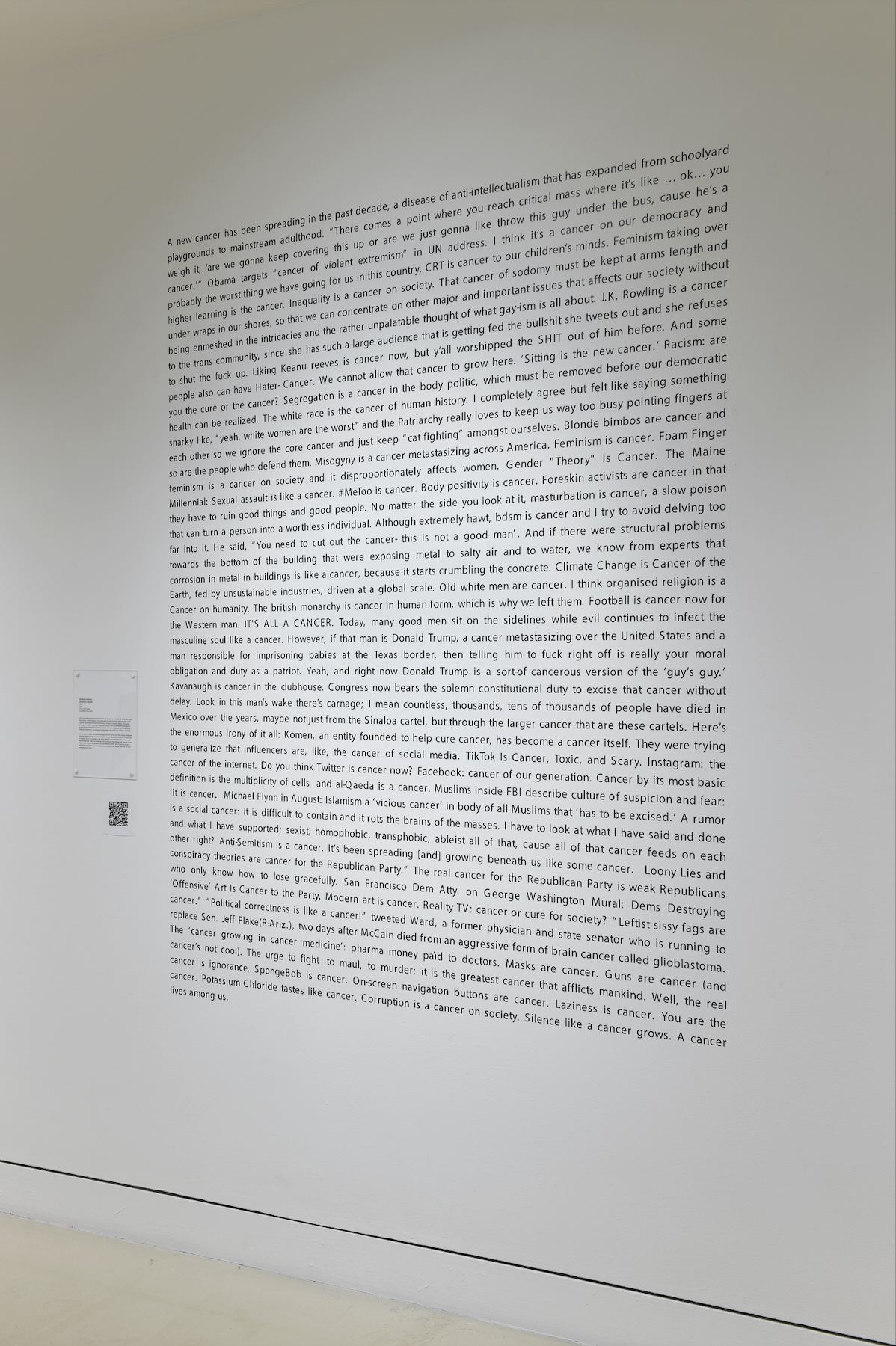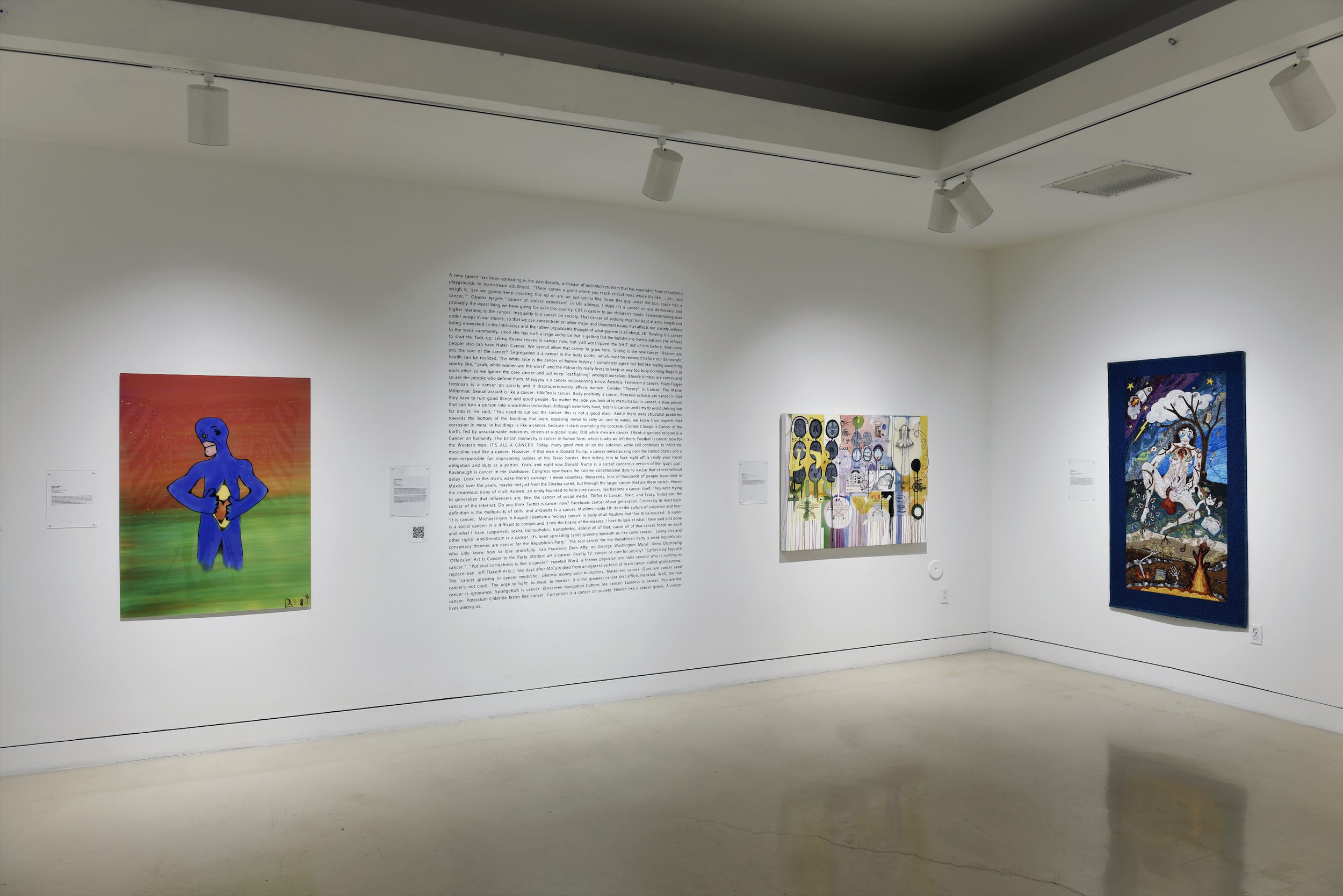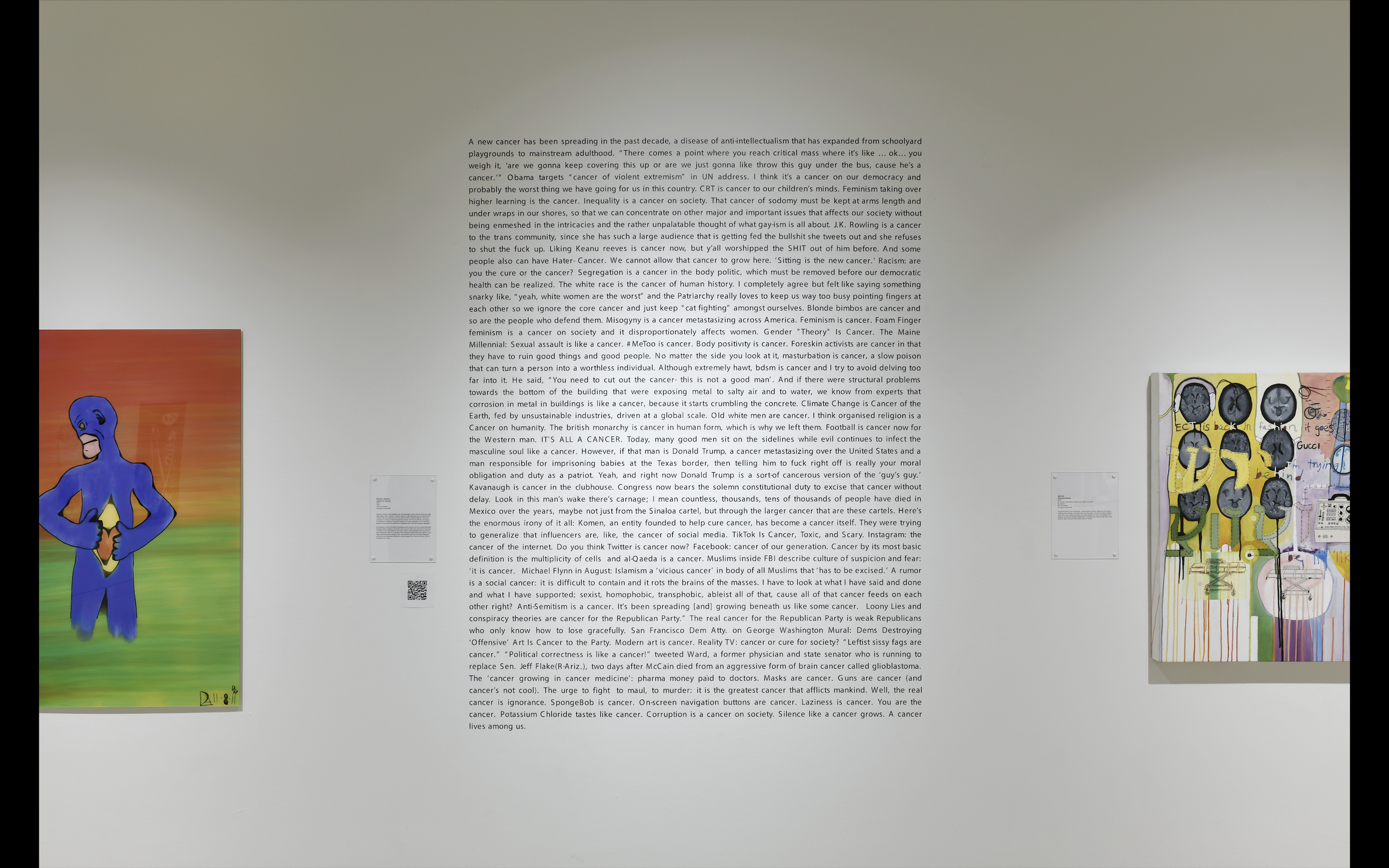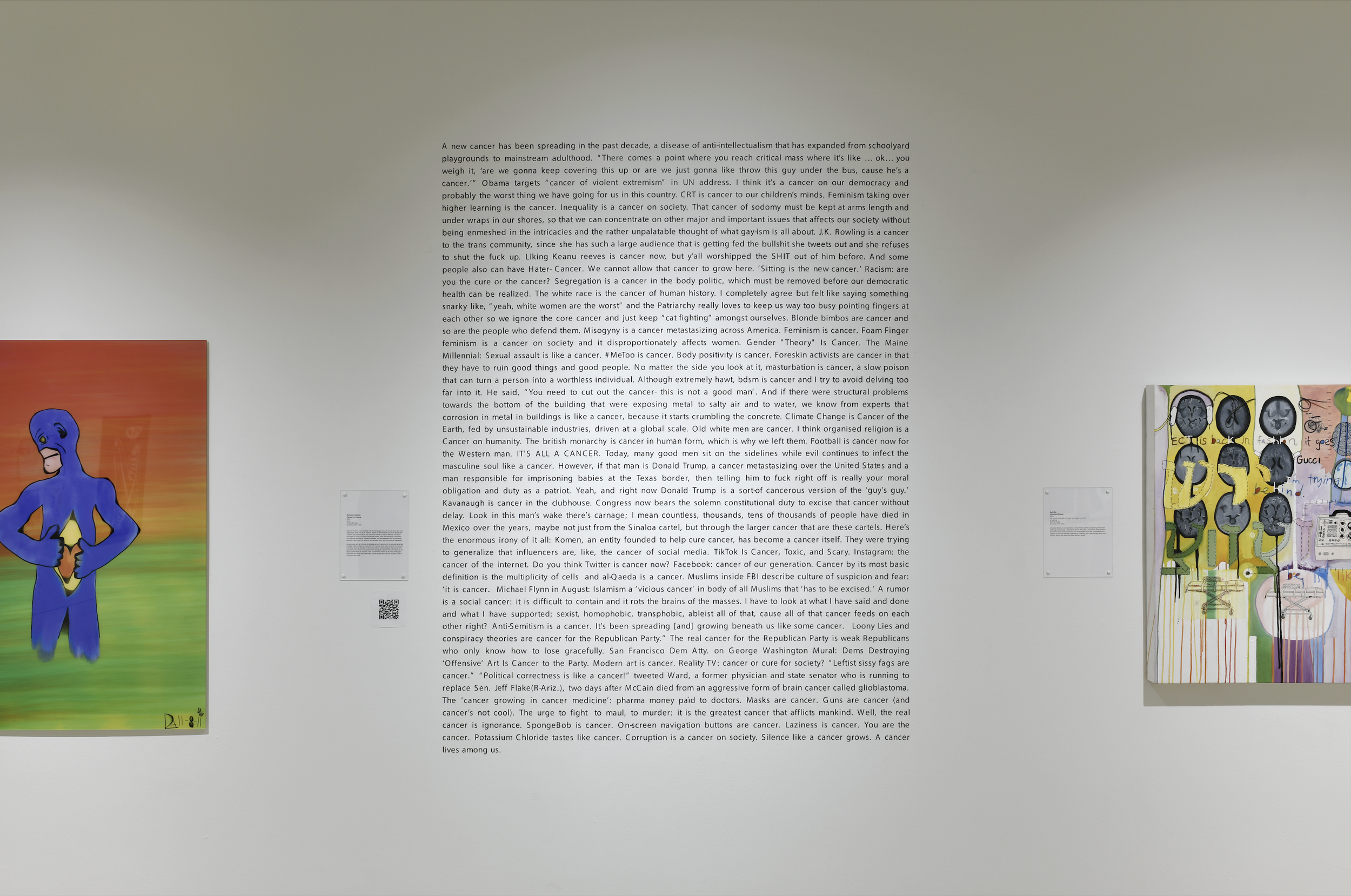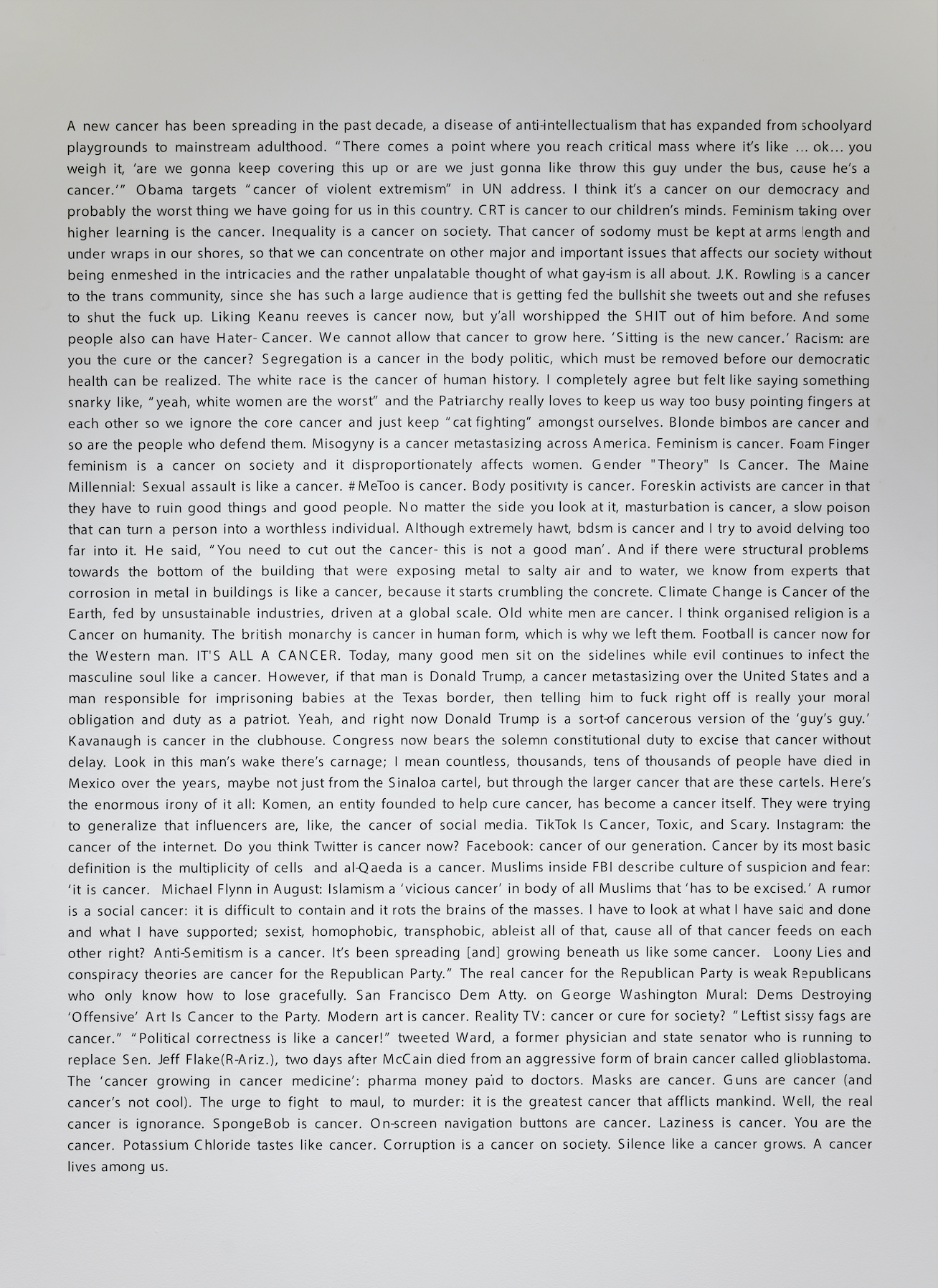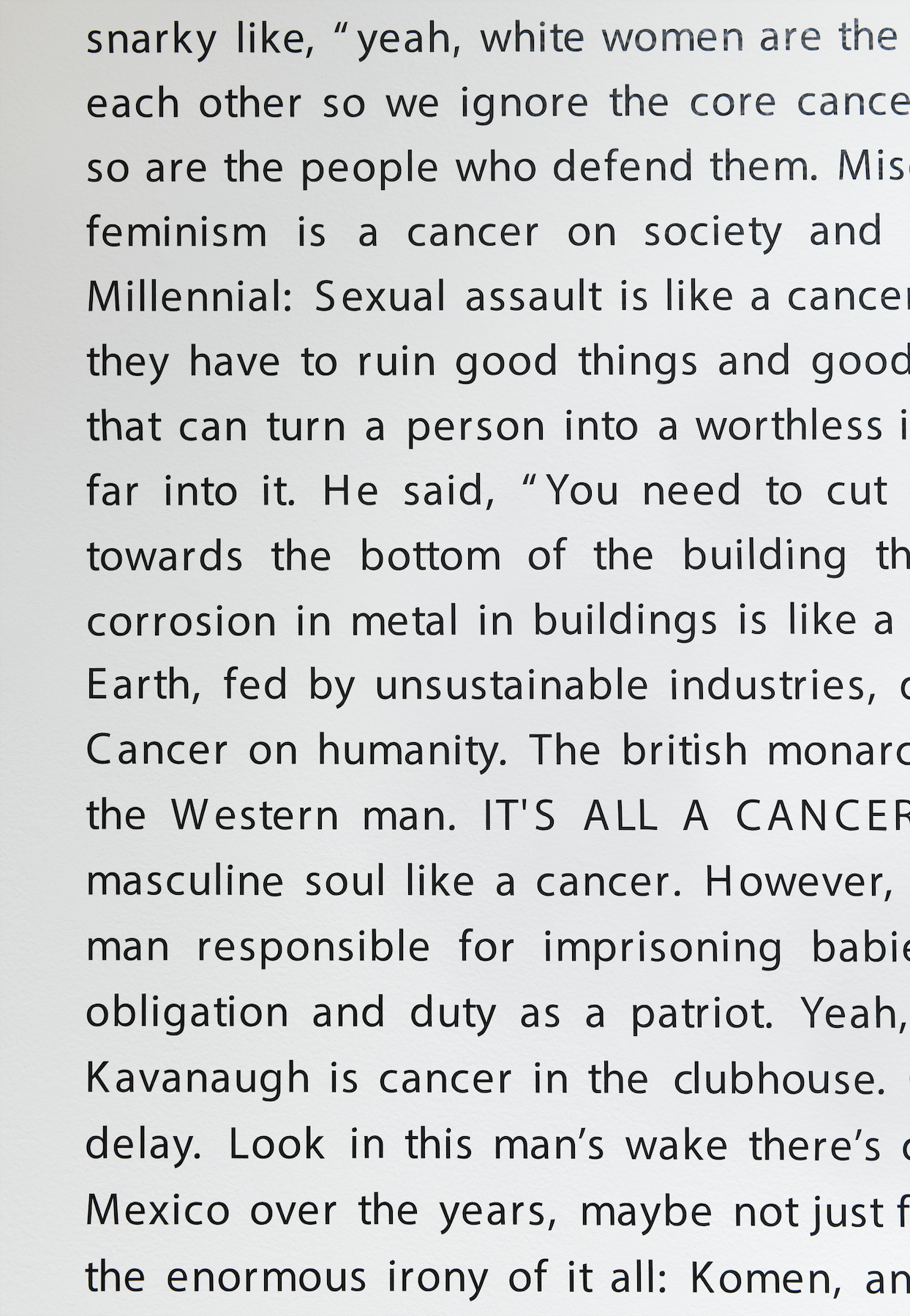Cancer is Cancer
Cancer is Cancer, vinyl lettering installation on museum wall, 75.5” x 58,” 2023
This piece was included in a group show as part of the summer exhibition programming at the Torrance Art Museum.
Cancer is Cancer, vinyl lettering installation on museum wall, 75.5” x 58,” 2023
‘Cancer’ as it’s being used today is devoid of the individuality of people directly connected to it. The general public, country leaders, respected journalists and white nationalist bloggers the like, use this analogy right alongside one another. Cancer isn’t bad intentioned, it doesn’t want anything; it’s a disease with biological imperatives that happen to be highly detrimental to us as humans. And we’ve conflated those two to such a degree that cancer is now unanimously equated with evil. And evil connotes a sense of the exceptional, supernatural even; a far cry from the reality of cancer which is very much of this world and biological. The word has now been abstracted from those bodies which it directly affects.
The cancer metaphor isn’t necessarily offensive to me, it just reads as unsophisticated and pandering AF. It lacks ingenuity, it lacks nuance, and it lacks sensitivity to both sides of the comparison. To whore out cancer makes it into everything and nothing simultaneously.
All of this adds up to the simple fact that I don’t know how to talk or think about cancer, even as someone with it. And how could anyone today? When you think about cancer, what do you think of? What images come to mind? Have you tried Googling it? It manages to progress somehow with both the sensitivity necessary to the grave realities of a deadly disease, but also with the evolution of Trump-age internet culture. We’ve made it into a monstrous hybrid, able to exist in these multiple disparate planes, swapping it out for ‘evil’ without a second thought, but also using it as the epitome of inspiration porn and pink-washed capitalism. And somewhere within all of these analogies and extremes and false equivalencies, people with actual cancer actually have to live.
For a full index of the quotes used in this piece, see below:
Art and Med - Torrance Art Museum
For over a decade Ted Meyer had curated art shows focusing on artworks by patient-artists as a means of teaching future doctors and current medical workers about the lived experience of chronic pain and illness.
These patient-artists create work that depicts the myriad of ways their illnesses affect day-to-day living, physical health and mental well-being. Like all important art, patient artwork makes strong statements about the human condition. These works are personal in their creation yet universal in their scope.
Respected authors can write about their pains and illness and they are revered, yet all too often visual artist are met with disdain for their work or told it is just too graphic and not “couch worthy”. Writing about illness is one thing but confronting it visually seems to have more of an impact, and that is the point for all these artists.
These pieces are some of Meyer’s favorites from his times as Artist-in-Residence at the Keck School of Medicine of USC. Over 10 years he as curated 40 exhibits focusing on the bodies biosystems. He ties these exhibits to the school’s core curriculum to produce not just beautiful exhibits but informational ones. Ted has curated show by artists with such illness as, Cystic Fibrosis, brain cancer, Gaucher Disease, Pulmonary illness, migraines, Breast Cancer, Polio, facial blindness, Strokes, and more.
Meyer believes that art about illness has it’s own beauty and that this work would never have been imagined/created/conceived had these artists been healthy. That fact alone give it a powerful narrative not achieved by other artwork.
Artists: Ellen Cantor, Ayin Es, Rose-Lynn Fisher, Siobhan Hebron, Cathy Immordino, Rachael Jablo, Daniel Leighton, Krista Machovina, J. Fredric May, Bhanva Mehta, Ted Meyer, Dylan Mortimer, Kathy Nida, Alice Marie Perrouit, Jane Szabo, Susan Trachman, James T. Walker
